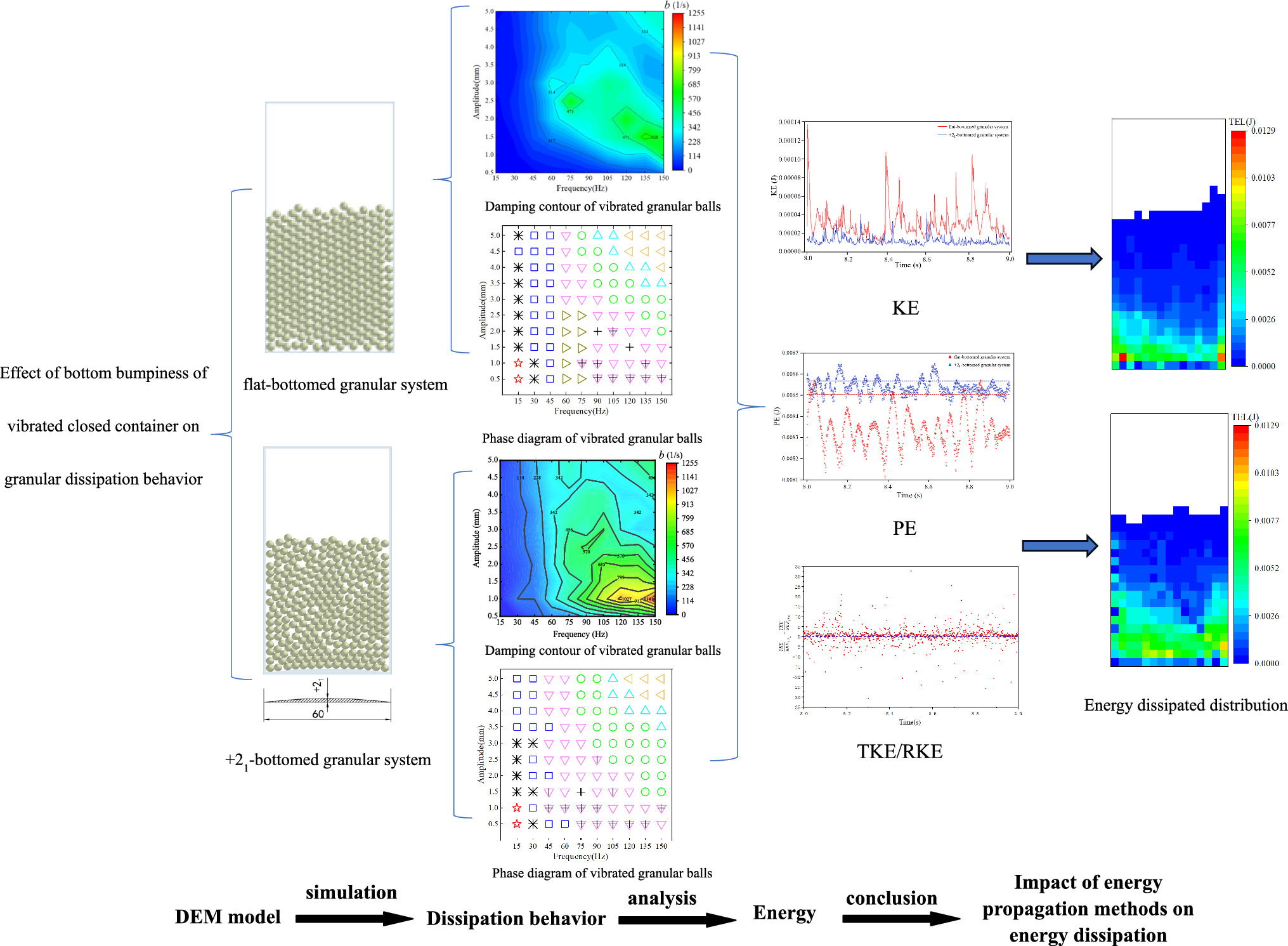https://doi.org/10.1140/epje/s10189-024-00443-6
Regular Article - Flowing Matter
Effect of bottom bumpiness of vibrated closed container on granular dissipation behavior
School of Mechanical Engineering, Xi’an University of Science and Technology, Xi’an, China
Received:
15
March
2024
Accepted:
17
July
2024
Published online:
29
July
2024
The dissipation behavior of granular balls inside quasi-two-dimensional closed containers with different levels of bottom bumpiness under vibration is examined in this article using the discrete element method. The quasi-two-dimensional closed granular system used in this paper has dimensions of  , and the diameters of the 279 filled granular balls are 4 mm. First, the dynamic behavior and damping effects of granular balls within a flat-bottomed closed container are explored across the range of relevant excitation parameters, identifying four high damping granular phases. Second, this study investigated the impact of the container's bottom surface bumpiness, convex height, and number of bumps on the dissipative behavior of internal granular balls. The findings reveal that a single 2 mm bump on the container's bottom surface maximally enhances the damping effect on the granular balls. Finally, by comparing the optimal damping behavior of granular balls inside a flat-bottomed container with that of a container featuring a single 2 mm bump at the bottom, this study revealed how the protruding bottom surface enhances the damping effect on the granular balls inside the container. This provides theoretical support for optimizing the performance of granular dampers in engineering practice by controlling the morphology of the cavity bottom surface.
, and the diameters of the 279 filled granular balls are 4 mm. First, the dynamic behavior and damping effects of granular balls within a flat-bottomed closed container are explored across the range of relevant excitation parameters, identifying four high damping granular phases. Second, this study investigated the impact of the container's bottom surface bumpiness, convex height, and number of bumps on the dissipative behavior of internal granular balls. The findings reveal that a single 2 mm bump on the container's bottom surface maximally enhances the damping effect on the granular balls. Finally, by comparing the optimal damping behavior of granular balls inside a flat-bottomed container with that of a container featuring a single 2 mm bump at the bottom, this study revealed how the protruding bottom surface enhances the damping effect on the granular balls inside the container. This provides theoretical support for optimizing the performance of granular dampers in engineering practice by controlling the morphology of the cavity bottom surface.
Copyright comment Springer Nature or its licensor (e.g. a society or other partner) holds exclusive rights to this article under a publishing agreement with the author(s) or other rightsholder(s); author self-archiving of the accepted manuscript version of this article is solely governed by the terms of such publishing agreement and applicable law.
© The Author(s), under exclusive licence to EDP Sciences, SIF and Springer-Verlag GmbH Germany, part of Springer Nature 2024. Springer Nature or its licensor (e.g. a society or other partner) holds exclusive rights to this article under a publishing agreement with the author(s) or other rightsholder(s); author self-archiving of the accepted manuscript version of this article is solely governed by the terms of such publishing agreement and applicable law.






